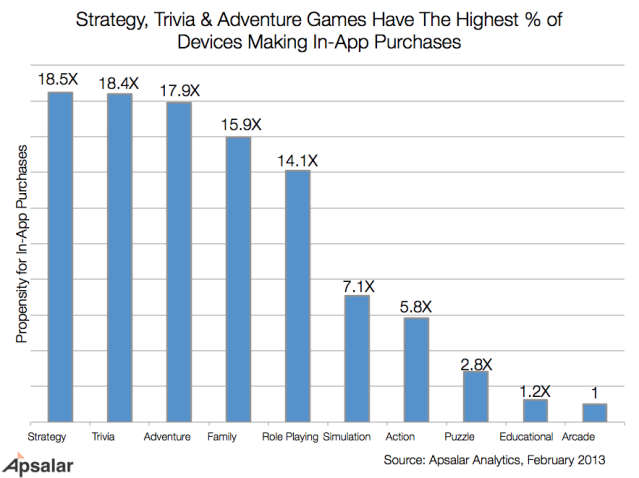How businesses and developers as individuals make money from software projects is one of the most important decisions they have to make. Of all the business models and strategies available, companies and freelancers need to pick the ones that best match their market and goals. This post focuses on the popularity of revenue models among professional developers and the companies they work for.
Of all the revenue models we track in our surveys, contracted development / consulting is the most popular model. As of Q1 2022, 31% of professional developers are using this model, 7 percentage points more than the next closest revenue model – selling apps or software. Contracted development can span months or even years, allowing for developers and companies to properly plan out resources during the project. In addition, professional developers and their companies may find the clients they contract for require additional services, thus leading to additional revenue. Contracted development is tried-and-true as it’s been the most popular revenue model for the past five surveys.
Selling apps/software through an app store or their own portal is the second most popular revenue model, with almost a quarter (24%) of professional developers making money in this way. Furthermore, adoption of this model has been stable over two and a half years, despite “Epic” lawsuits against Apple and Google in 2021, which argued that these app stores had excessive fees and restrictive payment collection processes. App stores and portals are popular now, but other technologies, such as progressive web apps (PWAs), could start to impact the popularity of app stores. PWAs can work across multiple platforms, provide a native experience, and can help developers avoid high commission fees from app stores; all of which are big incentives to embrace the power of the web.
Do you wanna get more insights and contribute to our effort to shape the Developer Ecosystem? Share your views on new technologies, tools or platforms for 2023, get a virtual goody bag and enter amazing prize draws! Start here
7% of professional developers are generating revenue from selling data
Interestingly, less than a tenth (7%) of professional developers are generating revenue by selling data. Data has often been referred to as the new gold and data breaches are heavily covered in news articles as well. If data is so valuable, why are so few professional developers using this model? Regulatory measures, such as the EU’s General Data Protection Regulation (GDPR), could be hampering developers’ ability to sell user data based on the “right to be informed” principle. The California Consumer Privacy Act (CCPA) also has multiple restrictions for selling user data including an earnings cap based on a company’s total revenue. These are just a couple of examples of why selling data is difficult, which impacts its popularity as a revenue model.

Next, we will look at how the industries that developers are active in influence their revenue models. Contracted development is the most popular revenue model across all sectors, further emphasising the effectiveness of this model.
Developers active in the software products and services, data analytics, and financial services verticals tend to have the same revenue strategies. Professional developers in all three of these sectors have the same top-three revenue model choices. In addition to contracted development, app stores and selling services/APIs are the more popular methods for generating revenue in these sectors.
In-app purchases break into the top three among developers in the entertainment and media sector. 28% of professional developers in this vertical are using this method, double the percentage of the general developer population. In-app purchases are strongly associated with the freemium strategy where users are able to use/download applications for free with some features restricted to micro-purchases. This strategy has become quite popular in game development for building a base of users and incrementally generating revenue, as long as the quality of production is high.
Contracted development is the revenue model of choice across all industry verticals
For professional developers working for companies in the marketing and advertising sectors, the advertising revenue model rises to second place, but it’s unable to unseat contracted development as the most used model. Looking across industries, there’s an apparent lack of usage of advertising as a revenue model among most other developers. On average, advertising is ranked eighth among professional developers outside of the marketing and advertising industry, being used about three times less often. Again, privacy protection may be hindering developers’ ability to use this revenue model effectively.

Finally, we evaluate revenue model usage among developers in different-sized companies. Again, contracted development remains the most popular model across every size of company. This strategy is the status quo for developers, and, with such popularity, it’s presumed to be the expectation by customers seeking professional development.
Developers working for micro-businesses are the most likely to report that they generate revenue from contracted development, with over a third (36%) of developers who work in them using this model. Professional developers in micro- businesses are also using multiple revenue models slightly more often than other developers. This indicates that companies of this size are trying to maximise their earning potential while relying heavily on the industry standard of contracted development. That being said, contracts don’t sell themselves, and micro-businesses have only 2-20 employees, so developers in these companies will likely be a close part of sales conversations.
Usage of the advertising revenue model declines as companies grow in size
Developers at large enterprises have a slightly different profile, as they tend to use the contracted development model less often than developers in other company sizes. We also see less use of the multiple revenue model, indicating that companies of this size have a more focused strategy for generating revenue.























